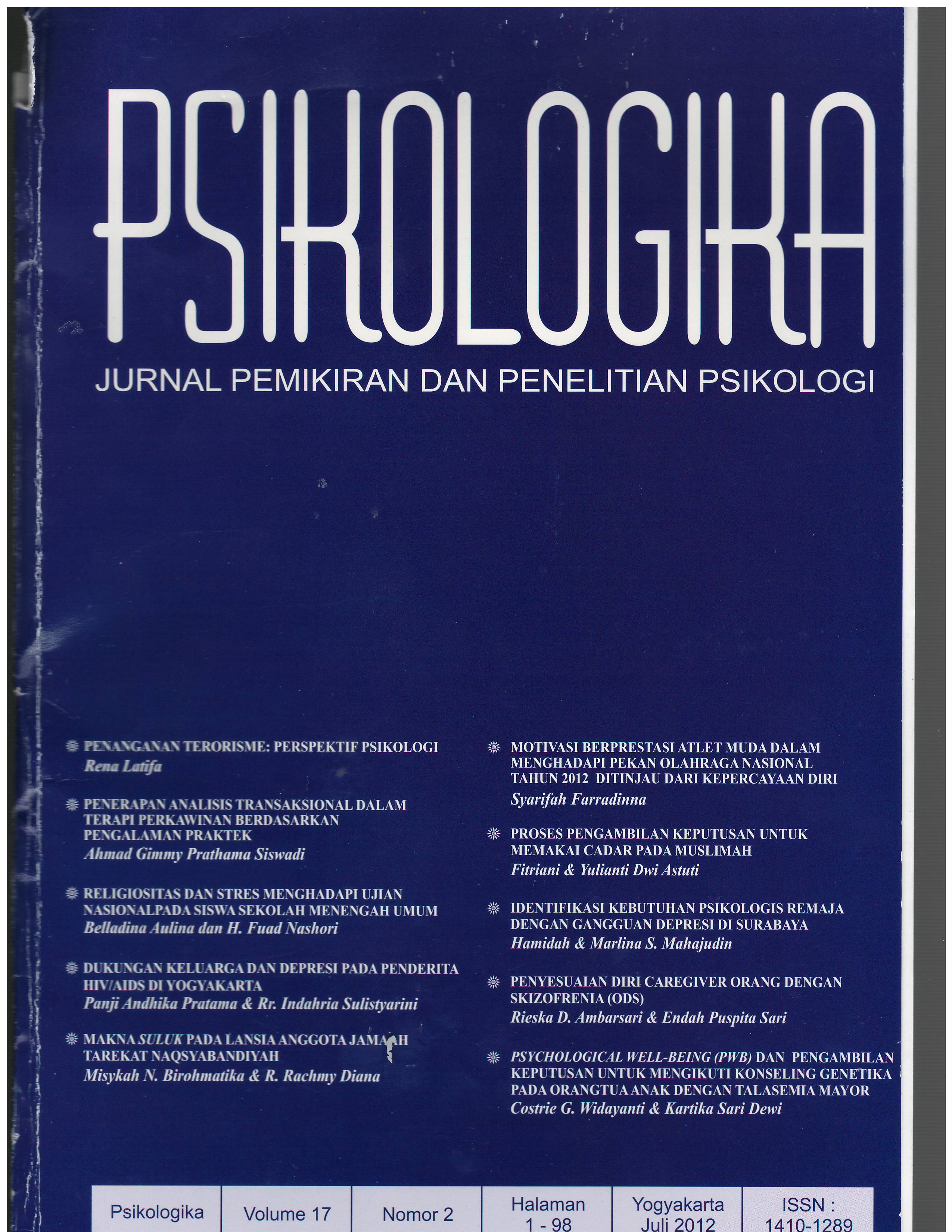Main Article Content
Abstract
The purpose in the research is to understand the correlation between religiosity and stress ahead of national exam in high school students. The hypothesis of this research is that there is negative correlation between religiosity and the stress ahead of national exams in high school students. The higher the religiosity, the lower stress ahead of the national exam. The lower the religiosity, the higher stress ahead of the national exam. Subjects of this research were students of the 3rd grade of high school. This research used the religiosity scale which is arranged by the researcher, based on the dimensions of religiosity according to Glock and Stark (Ancok & Suroso, 2008) and the stress scale, based on the theory of Sarafino (1994). Method of this research was used to verify the negative correlation between religiosity and stress ahead a national exam in high school students. Product moment correlation of Pearson shows the value of r = - 0.176 with p = 0.040 (p < 0.05), which means that there is a significant negative correlation between religiosity and stress ahead of national exams in high school students, thus the hypothesis is accepted.
Key words: Religiosity, stress ahead of the national exam
Article Details
Authors who publish with this journal agree to the following terms:
- Authors retain copyright and grant the journal right of first publication with the work simultaneously licensed under a Creative Commons Attribution-ShareAlike 4.0 International License that allows others to share the work with an acknowledgment of the work's authorship and initial publication in this journal.
- Authors are able to enter into separate, additional contractual arrangements for the non-exclusive distribution of the journal's published version of the work (e.g., post it to an institutional repository or publish it in a book), with an acknowledgment of its initial publication in this journal.
- Authors are permitted and encouraged to post their work online (e.g., in institutional repositories or on their website) prior to and during the submission process, as it can lead to productive exchanges, as well as earlier and greater citation of published work (See The Effect of Open Access).




